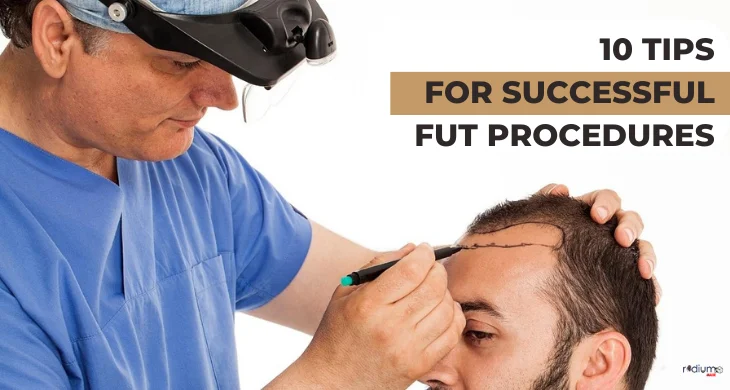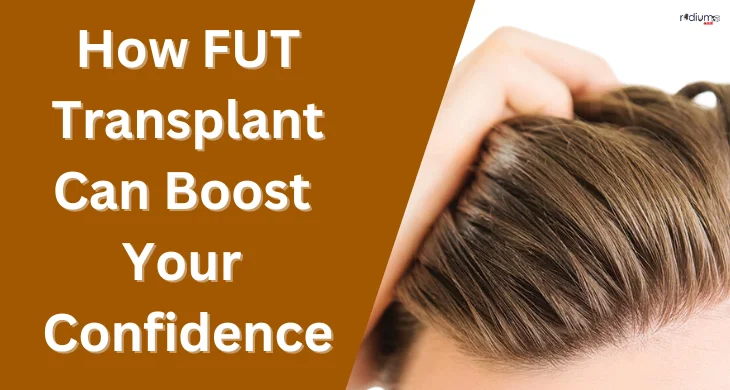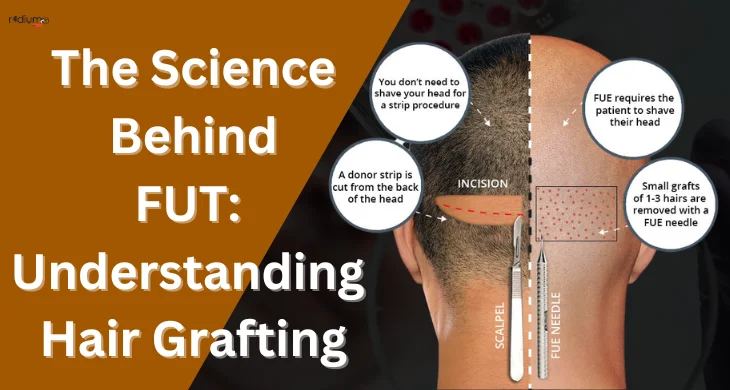Introduction-FUT Procedures
If you’re considering a Follicular Unit Transplantation (FUT) procedure ,it’s important to be well-informed and prepared. FUT is a Popular hair Transplant technique that involves the extraction of a Strip of hair follicles from the donor area and their transplantation to the recipient area. To ensure a successful FUT procedure and achieve the desired results, follow these ten essential tips.
1. Choose an Experienced Surgeon
The expertise and skill of the surgeon play a pivotal role in the success of your FUT procedure. Look for a highly experienced and board-certified hair transplant surgeon with a proven track record. Research their Qualifications ,read patient reviews, and view before-and-after pictures to gauge their proficiency.
2. Thoroughly Understand the Procedure
Before undergoing FUT, educate yourself about the entire process. Learn about the harvesting of hair follicles, the transplantation technique, and the recovery period. Understanding the procedure will help you set realistic Expectations and ensure you’re Well-Prepared both mentally and physically.
3. Consider the Donor Area
The donor area is the region from which hair follicles are extracted for transplantation. Ensure your surgeon assesses the donor area thoroughly to determine its suitability. Factors such as hair density, quality, and future hair loss Patterns should be taken into account to Maximize the effectiveness of the procedure.
4. Follow Pre-Procedure Guidelines
Your surgeon will provide specific instructions to follow before your FUT procedure. These guidelines may include avoiding certain medications, alcohol, and smoking, as they can affect the success of the surgery. Adhering to these guidelines will help Minimize any Potential complications and optimize the outcome.
5. Communicate Your Expectations
During your consultation, openly discuss your expectations with the surgeon. Share your desired hairline, density, and overall goals. Clear Communication ensures that you and your surgeon are on the same page and that the Procedure is tailored to meet your Specific needs.
6. Take Care of the Transplanted Area
After the FUT procedure, it’s crucial to take care of the transplanted area properly. Follow your surgeon’s instructions regarding post-operative care ,including gentle washing ,avoiding direct sunlight ,and refraining from strenuous activities. These measures Promote healing and minimize the risk of complications.
7. Be Patient with the Results
Hair growth after FUT takes time. Don’t expect immediate results, as the transplanted follicles need to establish their blood supply and start growing. It may take several months before you notice significant changes. Patience is key during the recovery period.
8. Maintain a Healthy Lifestyle
A healthy lifestyle promotes overall well-being and can positively impact the success of your FUT procedure. Eat a balanced diet rich in nutrients ,exercise regularly ,and manage stress effectively. Good general health contributes to optimal hair Growth and the longevity of your results.
9. Attend Follow-Up Appointments
Regular follow-up appointments with your Surgeon are vital for monitoring your progress and addressing any concerns. Attend these appointments as scheduled to ensure your recovery is on track and to seek Guidance from your surgeon if needed. Open communication throughout the healing process is crucial.
10. Stay Informed About Long-Term Hair Care
To maintain the results of your FUT procedure, stay informed about long-term hair care. Discuss post-transplant care routines with your surgeon, use recommended hair care products, and protect your hair from excessive heat and chemical damage. By following a proper hair care regimen, you can prolong the longevity of your results.
Conclusion
By following these ten tips, you’ll significantly increase your chances of a successful FUT procedure. Remember to choose an experienced surgeon, understand the procedure, take care of the transplanted area, and be patient with the results. Maintain a healthy lifestyle ,attend follow-up appointments, and stay informed about long-term hair care. Your Commitment and diligence will contribute to a positive outcome and boost your self-confidence. Best of luck on your FUT journey!

Ques. Is FUT a painful procedure?
Ans. No, FUT procedures are performed under local anesthesia, ensuring that you are comfortable and pain-free during the surgery. Some discomfort and mild Soreness may be Experienced during the recovery phase ,but this can be managed with Prescribed medications.
Ques. How long does it take to see results after an FUT procedure?
Ans. Hair growth after an FUT procedure is a gradual process. Initially, the transplanted hair sheds, and new hair starts to grow within a few months. Significant improvement in hair density and appearance can be expected within 9 to 12 months post-surgery.
Ques. Can I wear a hat or a cap after an FUT procedure?
Ans. Your surgeon will provide specific instructions regarding the use of hats or caps after the FUT procedure. It is Generally advisable to avoid Wearing tight-fitting headwear for a few weeks to allow the transplanted area to heal properly.
Ques. Are the results of FUT permanent?
Ans. Yes, the transplanted hair in FUT Procedures is typically resistant to the effects of DHT (dihydrotestosterone) ,the Hormone responsible for hair loss. As a result ,the Transplanted hair is considered Permanent and will continue to grow Naturally for a lifetime.
Ques. Can FUT be combined with other hair restoration treatments?
Ans. Yes, FUT can be combined with other hair restoration treatments such as medications (e.g., finasteride, minoxidil) or low-level laser therapy (LLLT). Your hair Transplant surgeon can provide guidance on the most suitable combination for your specific needs.
Ques. Are there any risks or complications associated with FUT?
Ans. As with any surgical procedure, FUT carries some risks and potential complications. These can include bleeding, infection, scarring, and temporary numbness in the donor or recipient areas. Choosing an experienced surgeon and following proper aftercare instructions can help minimize these risks.



